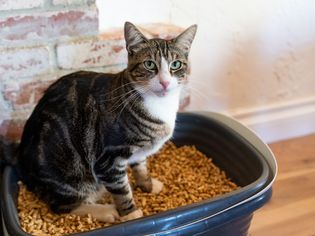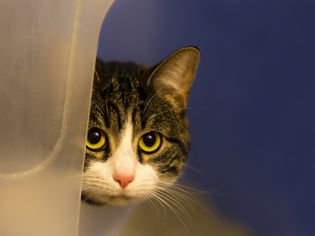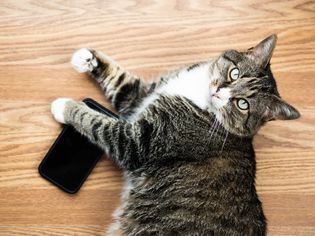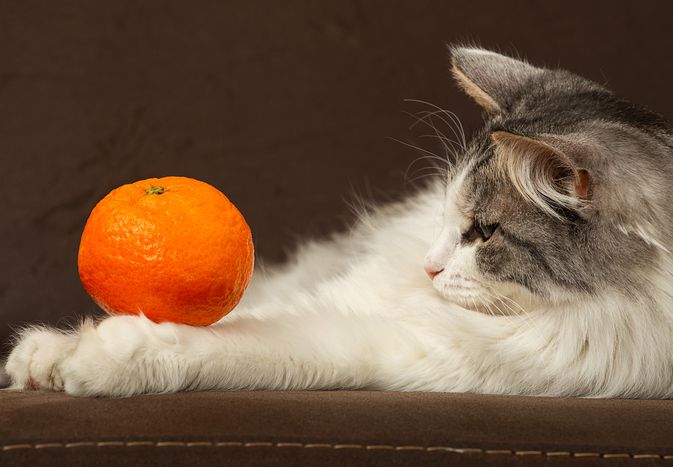
9 Types of Cat Litter to Help Your Feline Friend Clean Up
Cat litter is an essential supply for all indoor cats. While cats instinctively bury thei...
Cats are not low-maintenance pets. They require the same loving care as dogs, pet birds, and exotic pets. All adult cats should be seen by their veterinarian at least once a year for a routine wellness examination. This annual check-up draws a baseline of the cat's normal physical condition, which lets the vet easily spot differences in the cat's condition should illness or emergencies arise.
However, many cat owners do not take their cats to the vet annually. This is especially true for indoor-only cats and the reasons for skipping the check-up vary greatly. Your cat's health needs to get them in regularly. There are ways to overcome the most common obstacles and it's good to know what you can expect at the vet.
Many cat owners are hesitant to take their cat to the vet because they are financially strapped and simply can't afford routine veterinary care. If this is the case, talk to the vet about payment options or only giving your cat basic exam services. Also, keep in mind that preventing health problems can end up saving you money in the long-term.
Sometimes it's the cat that is the issue. Some cats are either too fearful, stressed, or aggressive when it's "cage time," so their owners delay vet visits. You might want to try a different carrier or a softer approach to getting your cat ready for the trip to the vet.
For instance, rather than being anxious about it because you know your cat is going to freak out, approach the experience calmly and with lots of treats and soothing caresses. Your cat will pick up on your more relaxed attitude and may be more willing to go without a fight. Be sure to maintain this calmness through the entire trip to the vet.
Ensuring you have everything you need ahead of time will help reduce your stress, which can ease your cat's anxiety as well. Be prepared and get these things ready the night before your scheduled appointment so you're not rushing around.
When you first go in for the exam, vet tech or assistant will typically weigh your cat. Some veterinary clinics even have a scale built into the examination table or a portable one they bring in for smaller animals. Next, the vet tech will take your cat's temperature with a rectal thermometer. You may be asked to assist with this by holding your cat's front end steady.
The veterinarian will then come in and manually examine your cat's key body parts: the eyes and nose, mouth and teeth, ears, heart and lungs, fur, paws and feet, and rear end. This is a good time to bring up any health concerns you have as well as behavioral issues you're dealing with. Keep in mind that cats often act out when they're not feeling well, so it's good to eliminate potential medical causes whenever your cat starts acting abnormally.
Your cat's eyes will be checked for clearness and signs of inflammation or tearing, while the nostrils will be looked at for signs of congestion. The vet will examine your cat's mouth and teeth for gum inflammation, signs of excess tartar, and any tooth abnormalities or breakage. Next, your vet will look at your cat's ears for signs of inflammation, redness, or drainage around the ear canal, along with mites.
Listening to your cat's heart and lungs allows your vet to find any heart murmurs or abnormal sounds, such as respiratory congestion. Then, your vet will comb the cat's fur with a flea comb, looking for signs of "flea dirt." Examining the paws and feet also allows your vet to look for broken or damaged claws, cuts, or injury to the pads. Then, the anus will be checked for visual evidence of worms, and the anal gland will be looked at for potential signs of infection or impaction.
Lastly, your veterinarian will carefully palpate fingers into your cat's internal organs to feel for signs of abnormalities, such as swelling, lumps, or bumps. This is one of the most important parts of the wellness check, as your vet's fingers have the magical ability to remember how a particular cat feels normally. This makes it easy to pinpoint potential problems at future visits.
If this is your cat's first vet visit as an adult, your veterinarian will likely run a series of lab tests. These tests will establish a "baseline" of your cat's normal health and make it easier to spot changes during the cat's next vet appointment. These tests commonly include:
You cat will also need to get all recommended vaccinations up to date. Vets and their assistants are typically very good at distracting animals while giving the injections, so your cat may not even notice the needle pricks. You may also be asked to help hold your cat, which is when a gentle touch and calm voice can come in handy.
Even housecats can escape outside where they'll be exposed to potential dangers. And, if you have other animals in the house, they can pass things to one another, so vaccinations are important. Among the recommended vaccinations are those that protect your cat from:
After your appointment, your veterinarian will discuss findings from the physical examination and give you medications such as worming medicine, when indicated. You will also receive the results of the lab tests, usually by phone a few days later, along with any necessary follow-up appointments.
If your cat cowers at the site of its carrier, let it get used to the object before it's time to go to the vet. Set the carrier out on the floor with the door open and place a few treats inside. Don't force your cat to go in. Instead, allow it to explore the carrier on its own.
The car ride can be one of the most stressful parts of your cat's trip to the vet. To keep kitty as calm as possible, place the carrier in the car right before you're ready to leave. Plenty of treats, a blanket, or some catnip may help comfort your cat during the trip as well.
Be sure to ask your vet any questions that you have, even if they come up a few weeks later. You won't necessarily have to go back to the office as many questions can be answered over the phone. A good relationship with your pet's vet is good for your cat's health and they will be there to help you throughout kitty's entire life.
Don't rely on the internet for a diagnosis of any health problems as an alternative to vet care. While it's good to be informed, only your vet knows your cat's history and can give you an accurate diagnosis.

Cat litter is an essential supply for all indoor cats. While cats instinctively bury thei...
Cats are fastidiously clean animals. They constantly groom themselves, don't like to ...

Cat humping isn't uncommon, even for neutered male cats. They'll hump other cats...

Fear aggression is the most common type of feline aggression. A percentage of cats simply...

Understanding how animals learn is key to influencing and interpreting their behavior. Pe...

Do cats get jealous? Not exactly. Like people, cats have different personality traits. On...

Most cats hate the smell of citrus and are unlikely to nibble on your orange. However, as...

Although the concept of early spaying and neutering of both cats and dogs is not new, its...

A critical part of a dental care program for cats is an at-home examination of their ...
Comments on "How to Prepare Your Cat for an Annual Veterinary Exam" :